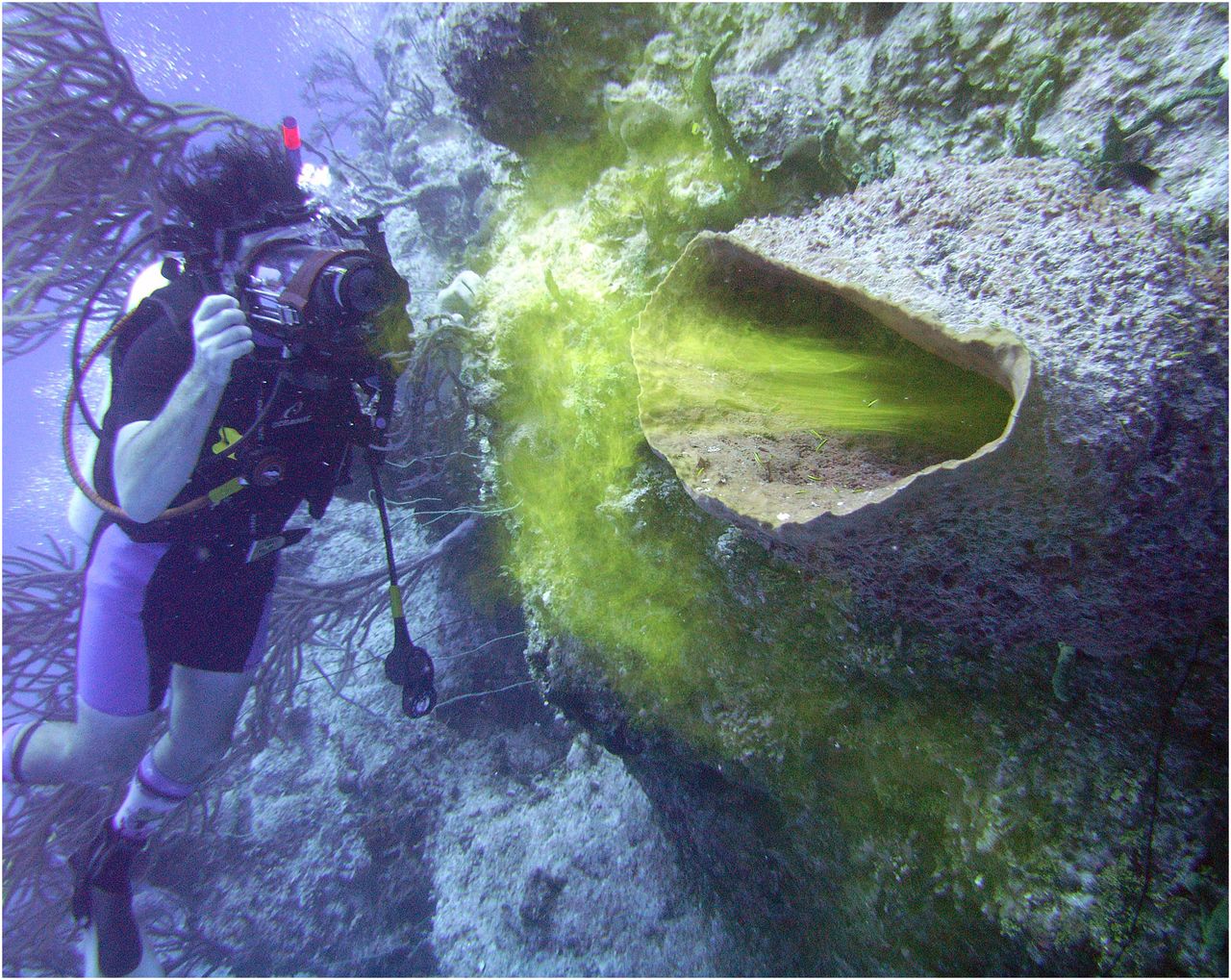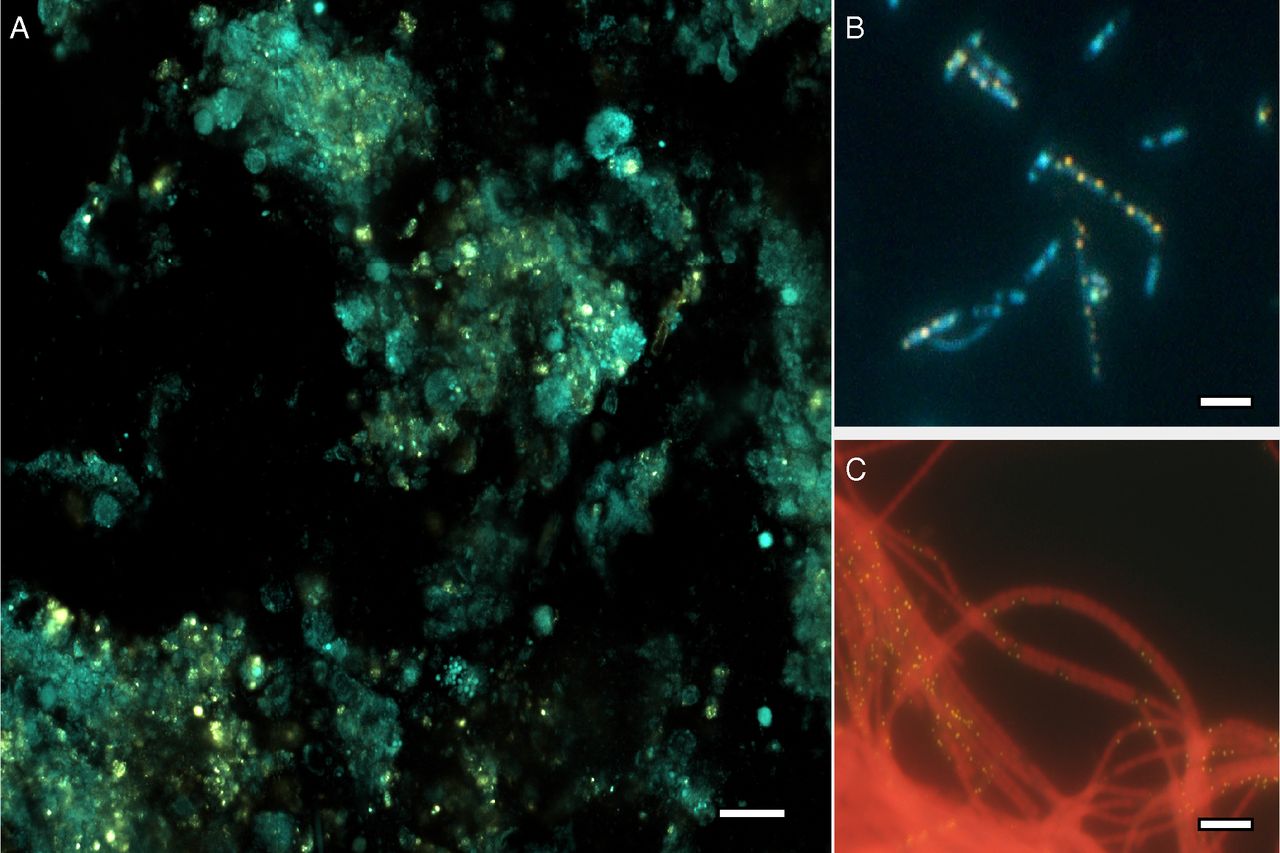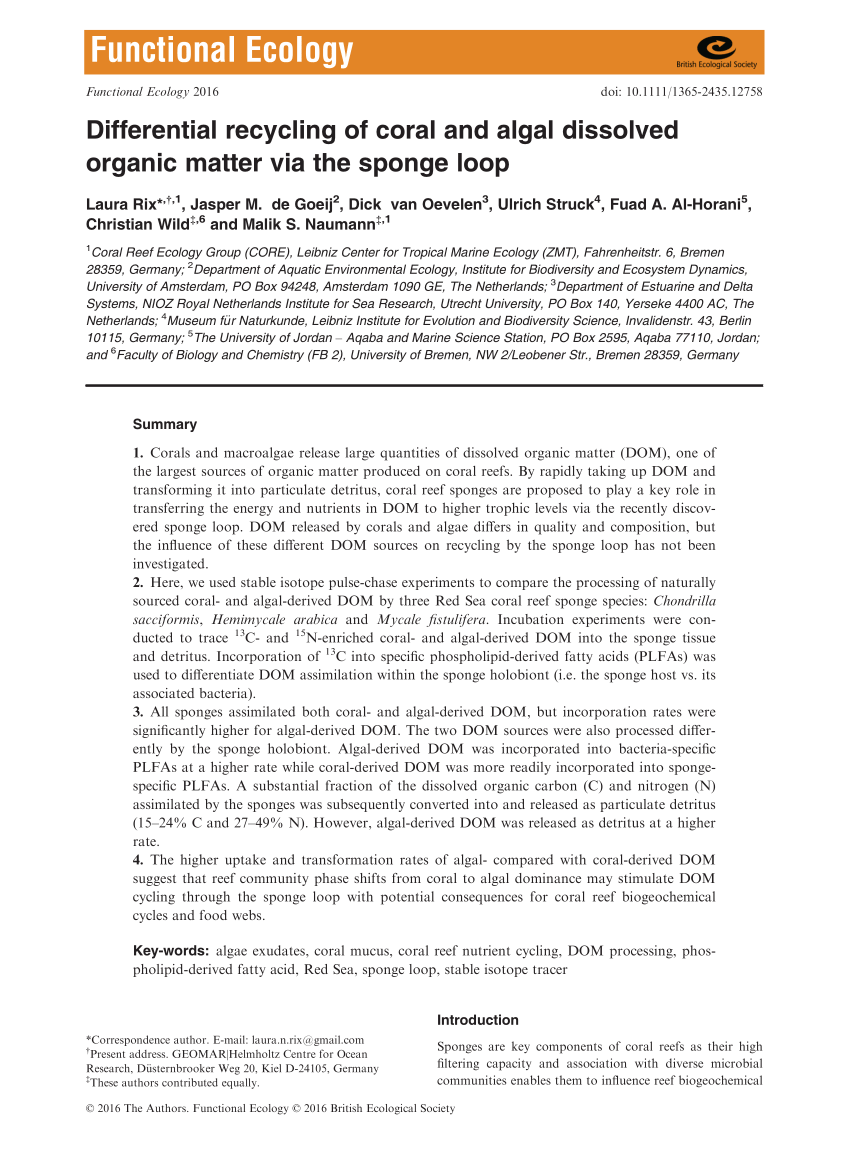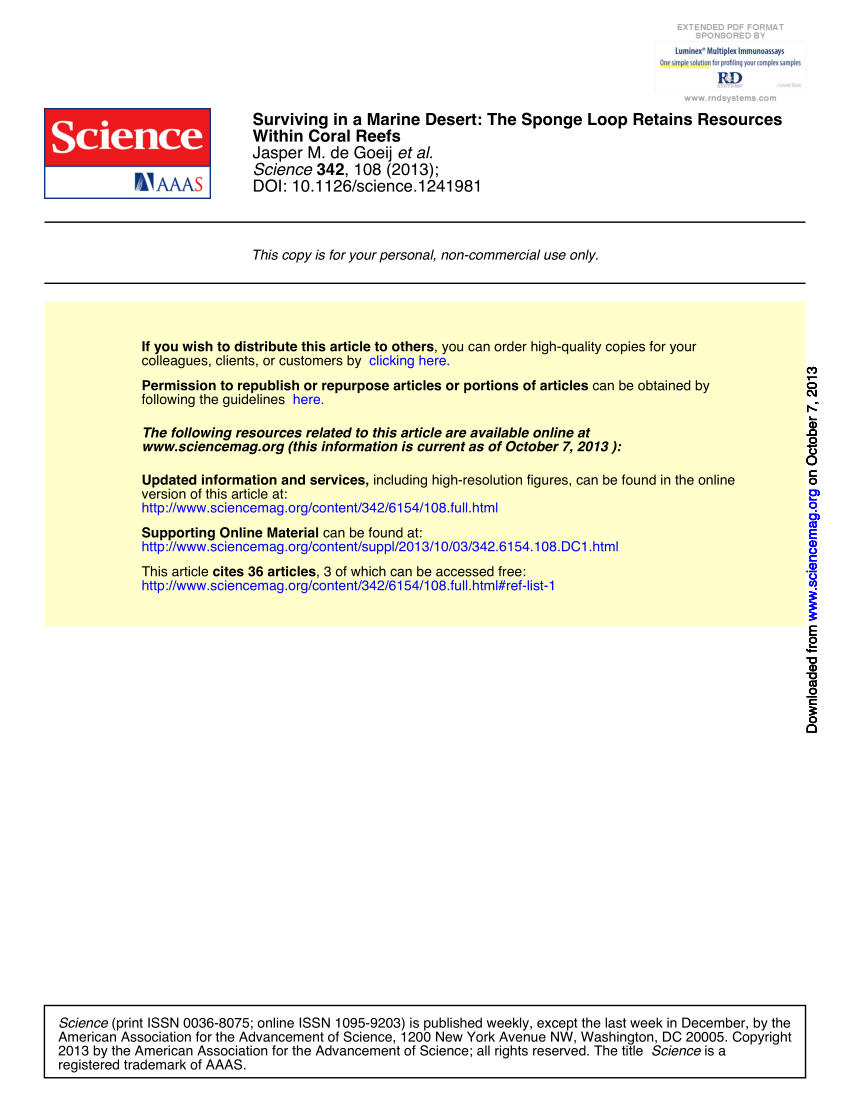I've been fascinated with the idea of cryptic refugia since reading about Tyree's "Zonal" methodology a couple decades ago. Following the research being done on reefs it's amazing how well some of his ideas have been substantiated and shown how critical cryptic sponges are to a healthy reef ecosystem. Here's some links for those interested:
Element cycling on tropical coral reefs.
This is Jasper de Geoij's ground breaking research on reef sponges. (Sponges remove labile DOC 1000x faster than bacterioplankton.) (The introduction is in Dutch but the content is in English.)
Sponge symbionts and the marine P cycle

 www.pnas.org
www.pnas.org
Phosphorus sequestration in the form of polyphosphate by microbial symbionts in marine sponges

 www.pnas.org
www.pnas.org
Differential recycling of coral and algal dissolved organic matter via the sponge loop.
Sponges treat DOC from algae differently than DOC from corals. (The link should work but cut and paste if not.)

 www.researchgate.net
www.researchgate.net
Surviving in a Marine Desert The Sponge Loop Retains Resources Within Coral Reefs
Dissolved organic carbon and nitrogen are quickly processed by sponges and released back into the reef food web in hours as carbon and nitrogen rich detritus.

 www.researchgate.net
www.researchgate.net
Natural Diet of Coral-Excavating Sponges Consists Mainly of Dissolved Organic Carbon (DOC)

 www.ncbi.nlm.nih.gov
www.ncbi.nlm.nih.gov
The Role of Marine Sponges in Carbon and Nitrogen Cycles of COral Reefs and Nearshore Environments.
 search.proquest.com
search.proquest.com
Element cycling on tropical coral reefs.
This is Jasper de Geoij's ground breaking research on reef sponges. (Sponges remove labile DOC 1000x faster than bacterioplankton.) (The introduction is in Dutch but the content is in English.)
Sponge symbionts and the marine P cycle

Sponge symbionts and the marine P cycle
Marine sponges are ubiquitous colonizers of shallow, clear-water environments in the oceans (1, 2). Sponges have emerged as significant mediators of biogeochemical fluxes in coastal zones by virtue of respiring organic matter and facilitating both the consumption and release of nutrients (3, 4)...
Phosphorus sequestration in the form of polyphosphate by microbial symbionts in marine sponges

Phosphorus sequestration in the form of polyphosphate by microbial symbionts in marine sponges
Coral reefs are highly productive ecosystems that raise a conundrum called “Darwin’s paradox”: How can high production flourish in low-nutrient conditions? We show here that in three abundant Caribbean sponges, the granules that have been commonly observed in sponge tissue for decades are...
Differential recycling of coral and algal dissolved organic matter via the sponge loop.
Sponges treat DOC from algae differently than DOC from corals. (The link should work but cut and paste if not.)

(PDF) Differential recycling of coral and algal dissolved organic matter via the sponge loop
PDF | Summary Corals and macroalgae release large quantities of dissolved organic matter (DOM), one of the largest sources of organic matter produced on... | Find, read and cite all the research you need on ResearchGate
Surviving in a Marine Desert The Sponge Loop Retains Resources Within Coral Reefs
Dissolved organic carbon and nitrogen are quickly processed by sponges and released back into the reef food web in hours as carbon and nitrogen rich detritus.

(PDF) 2013 deGoeij Science Sponge loop
PDF | On Jun 23, 2015, Jasper M de Goeij and others published 2013 deGoeij Science Sponge loop | Find, read and cite all the research you need on ResearchGate
Natural Diet of Coral-Excavating Sponges Consists Mainly of Dissolved Organic Carbon (DOC)

Natural Diet of Coral-Excavating Sponges Consists Mainly of Dissolved Organic Carbon (DOC)
Coral-excavating sponges are the most important bioeroders on Caribbean reefs and increase in abundance throughout the region. This increase is commonly attributed to a concomitant increase in food availability due to eutrophication and pollution. We ...
The Role of Marine Sponges in Carbon and Nitrogen Cycles of COral Reefs and Nearshore Environments.
The role of marine sponges in carbon and nitrogen cycles of coral reef and nearshore environments - ProQuest
Explore millions of resources from scholarly journals, books, newspapers, videos and more, on the ProQuest Platform.
Last edited:


















